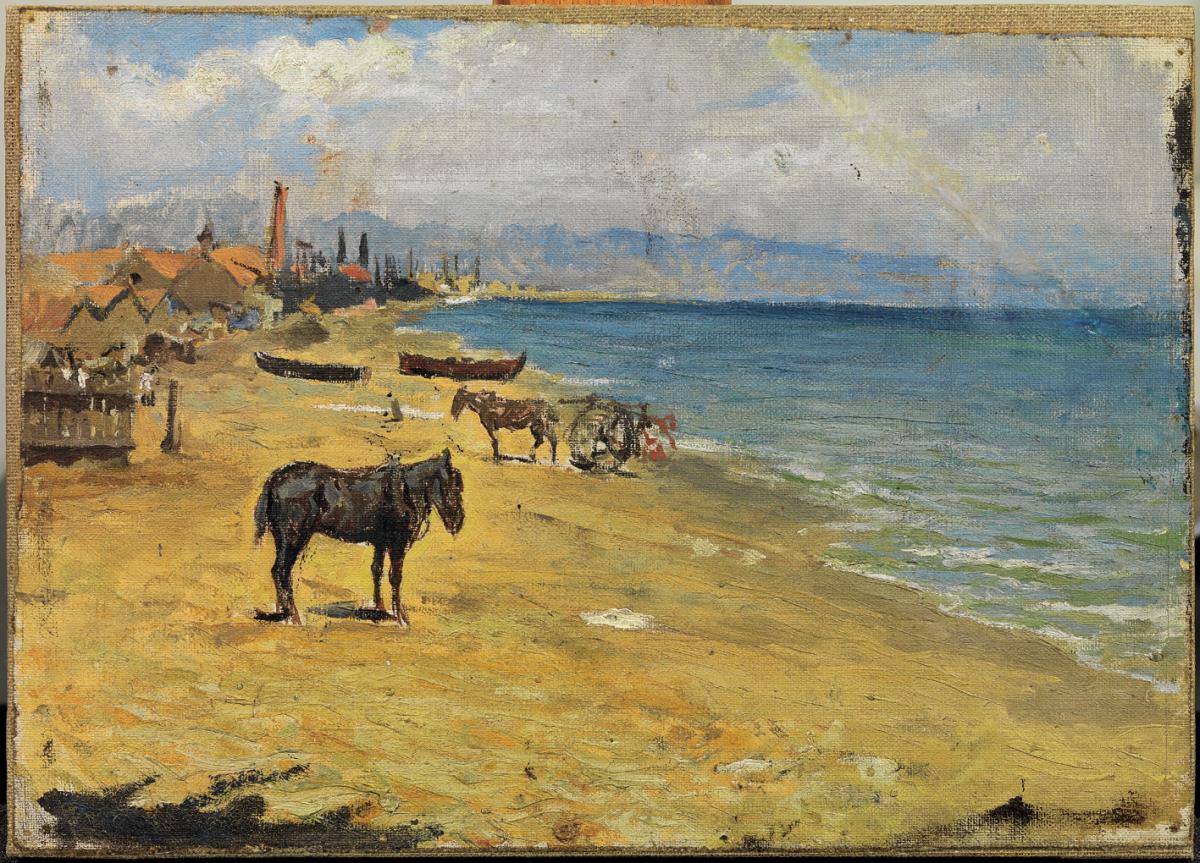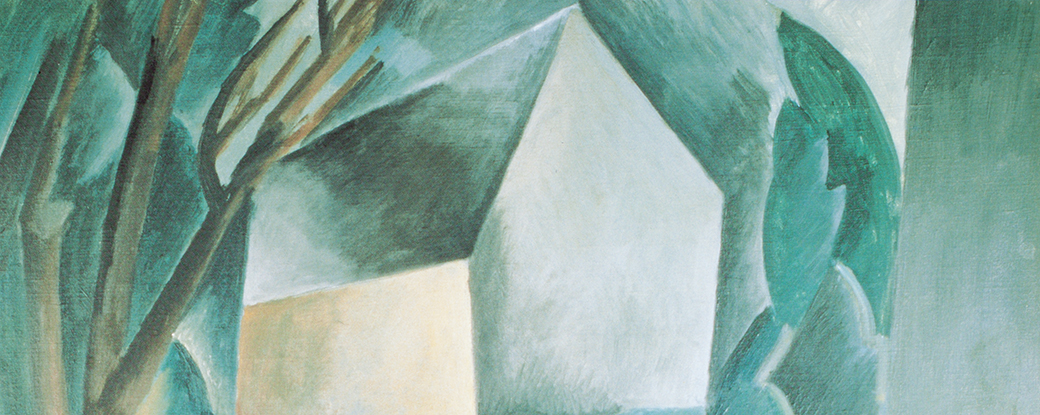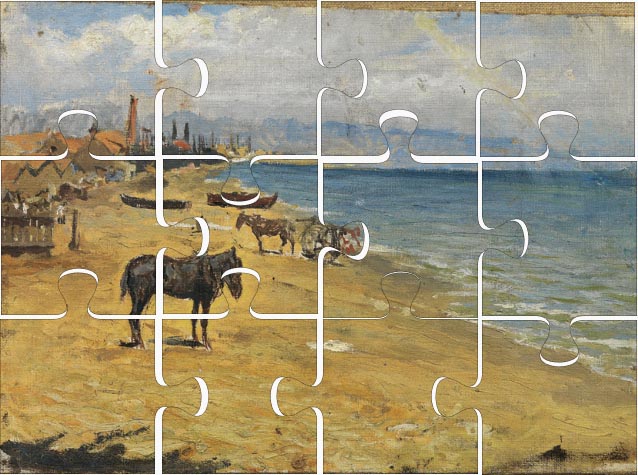Barceloneta Beach

Barceloneta Beach
Barceloneta Beach
During his apprenticeship, Picasso’s incursions into landscape painting frequently led him to explore seascapes, as exemplified by this oil painting, probably because all the cities in which he had lived until then were seaports. Moreover, the fact that all his homes were located close to a harbour provided the young painter with numerous opportunities to capture such inspiring surroundings.
This is a view of Barcelona’s sea front, with the Marina mountain range in the background, the Mar Bella and Bogatell beaches, the factories of the working-class Poblenou district and La Barceloneta beach in the foreground. Concerned with the representation of perspective, Picasso reveals his ability to order space, combining proximity and distance by a diagonal line that distinguishes beach from sea. The scene is balanced by the inclusion of a mule in the foreground, although it is also notable for the vagueness of the middle ground, and chromatic impressions take precedence over line in both the coastal landscape and the sea horizon.
We should point out that in this work Picasso’s choice of colour, far removed from the dark brown tonalities found in the tradition of Spanish landscape painting, forms a sharp contrast with the palette characterising academic painting. The use of yellowy tones connects with the aesthetics of the Colla del Safrà art group, founded in 1893, whose members shared an interest in plein air painting and a taste for crepuscular scenes depicted in hues of yellow and orange. Picasso had had occasion to see and appreciate the works of these artists at the third Exposition of Fine Arts and Crafts that opened in April 1896 at Barcelona’s Fine Arts Palace, where he himself displayed the oil painting "First Communion" (MPB 110.001). Joaquim Mir’s painting "The Rector’s Kitchen Garden" (Museu Nacional d’Art de Catalunya, Barcelona) is the work that aroused most interest at the show, so it is reasonable to believe that it drew Picasso’s attention and prompted him to experiment with saffron hues that same summer.
His oeuvre gradually evolved towards formal simplification as line lost importance in favour of free-flowing nimble brushstrokes that conveyed a new way of capturing landscape that would distinguish subsequent works such as "The Street of Riera de Sant Joan from the Artist’s Studio" (MPB 110.213) and other views from windows. All these pictures are conceptually and technically much freer, and are characterised by patches of colour that elude detail and will subsequently develop into new forms of plastic expression.
Located in
CP Sala 0224.4 cm x 34 cm
Gift of Pablo Picasso, 1970
MPB 110.073







